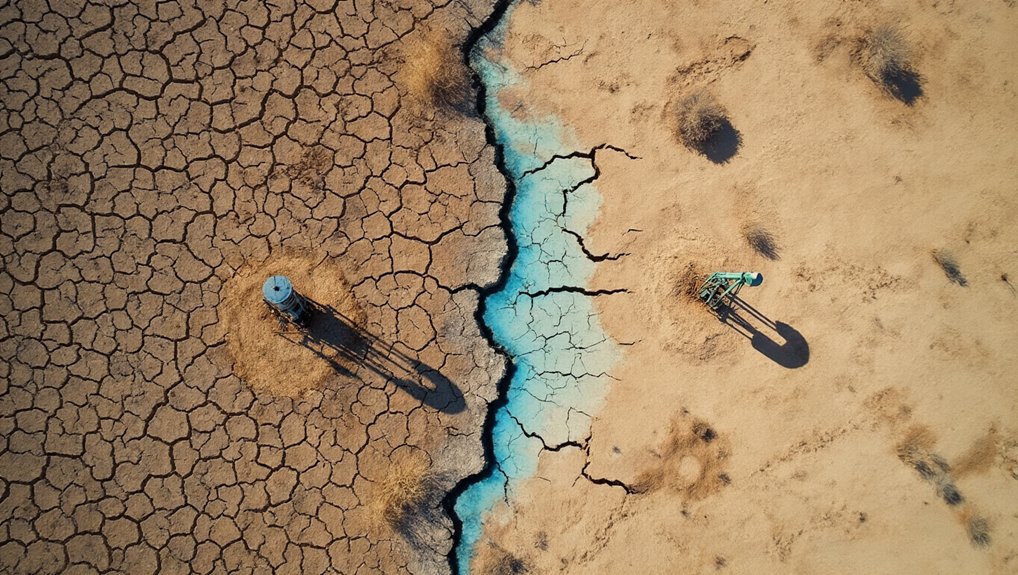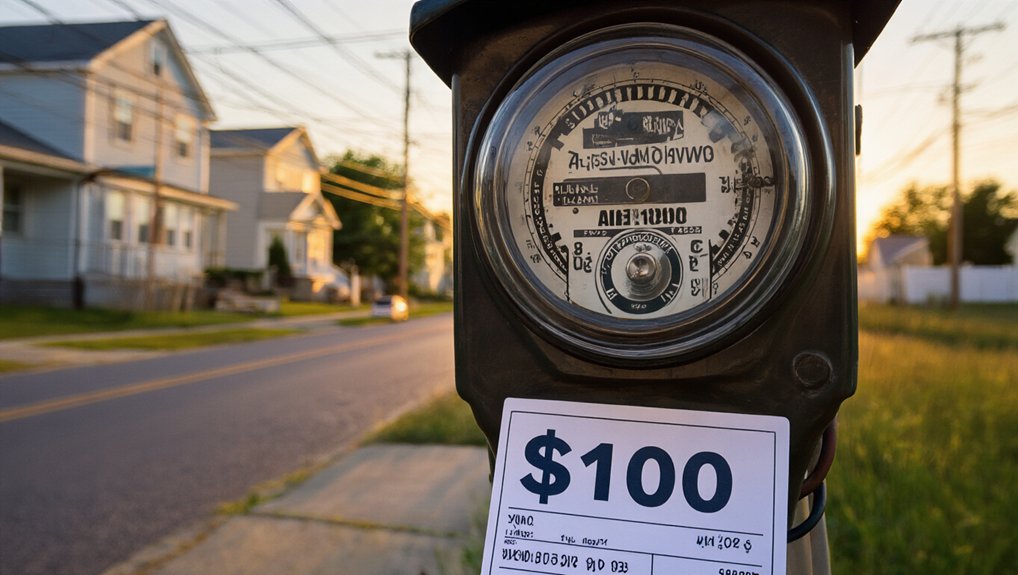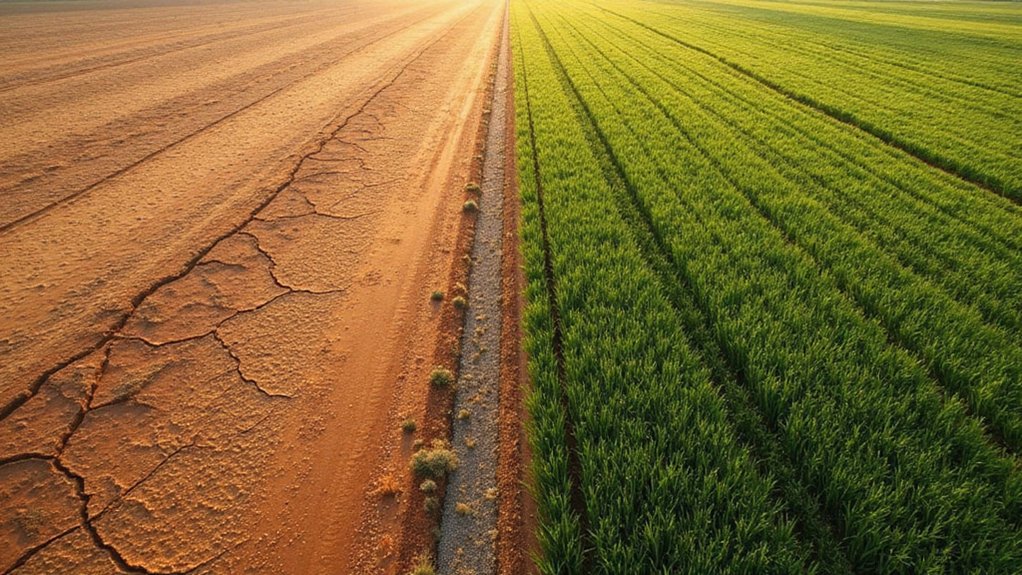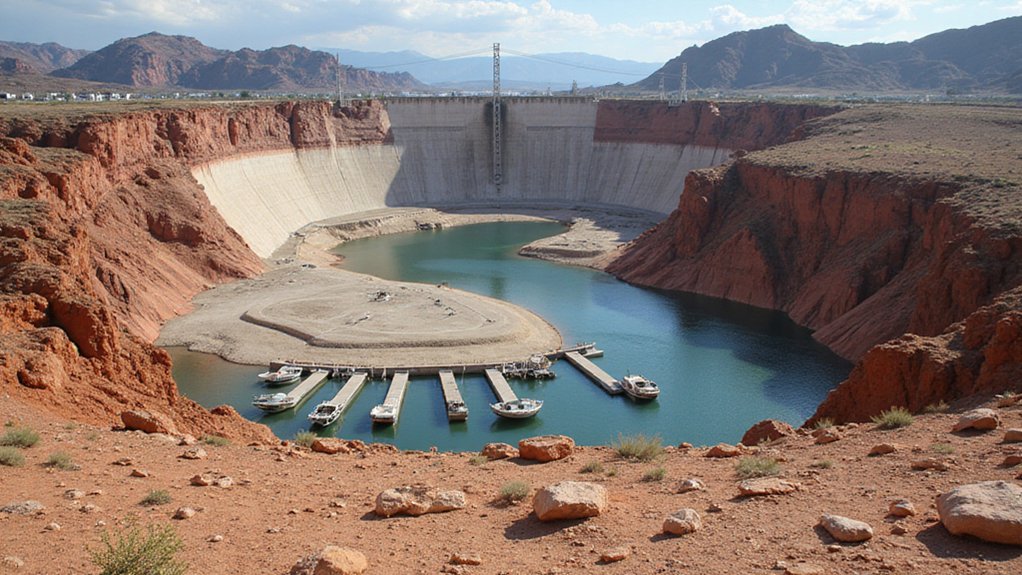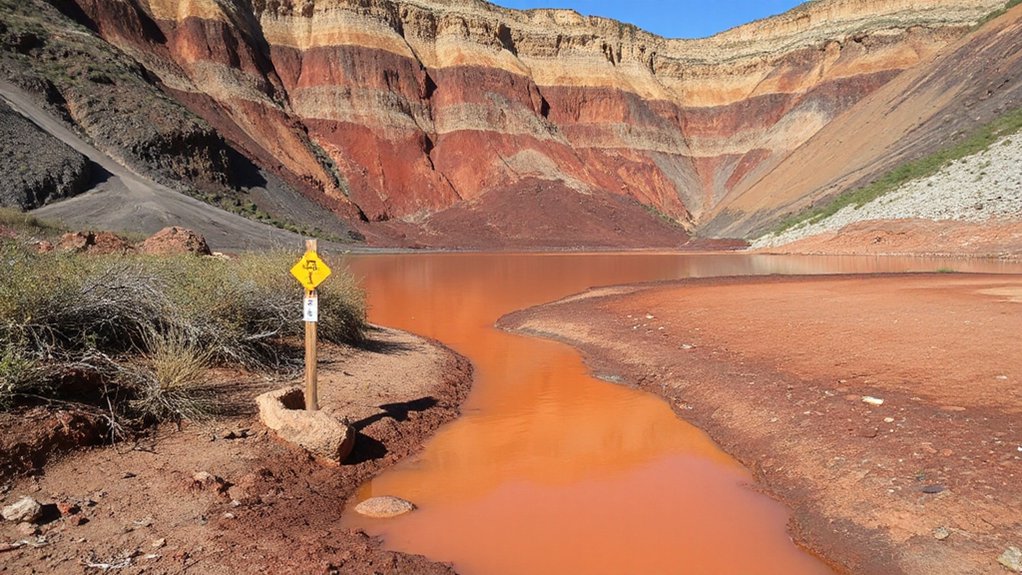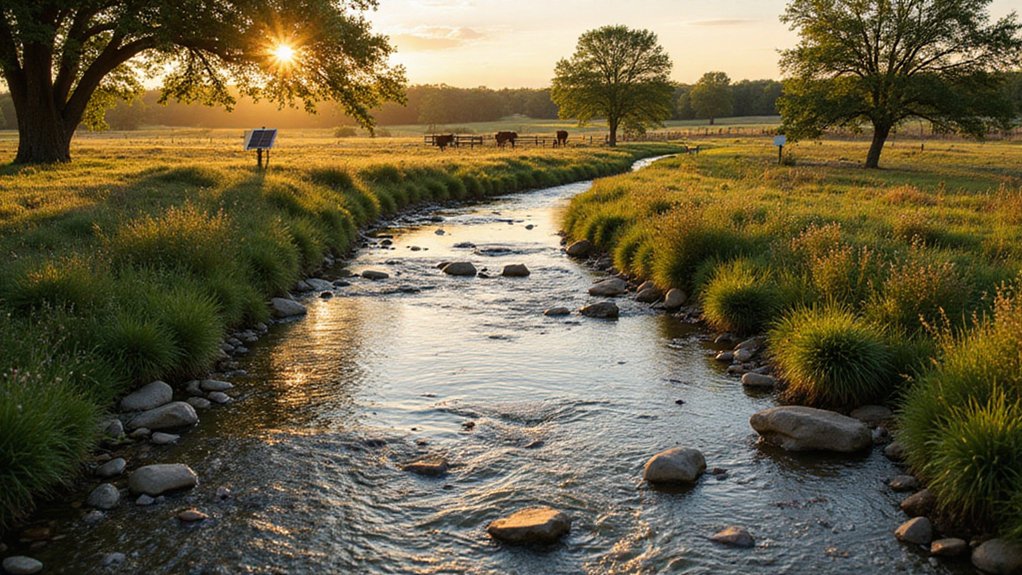Colorado’s invisible water crisis makes the lake shortage look cute. Since 2003, the basin has hemorrhaged 28 million acre-feet of groundwater—enough to fill Lake Mead completely. That’s 1.2 million acre-feet vanishing annually, four times worse than surface water losses. Farmers keep drilling deeper wells while Arizona leaves 82% of its groundwater unregulated. The underground emergency reserves are disappearing twice as fast as the water everyone can see. The countdown gets uglier from here.
Since 2003, the Colorado River Basin has hemorrhaged 28 million acre-feet of groundwater—enough water to fill Lake Mead completely.
While everyone’s been watching the bathtub rings on shrinking reservoirs, the real disaster has been happening underground, where nobody can see it.
The numbers are brutal. Groundwater losses average 1.2 million acre-feet annually, four times worse than what’s happening to surface reservoirs.
That invisible water beneath the desert? It’s vanishing more than twice as fast as the water everyone can actually see disappearing from lakes and rivers.
Farmers are the main culprits here, pumping like there’s no tomorrow because, well, there might not be. In Arizona, where 82% remains unregulated, groundwater pumping continues unchecked despite desperate attempts to pass legislation.
This February brought 3 inches of precipitation statewide, pushing the annual total to 13.3 inches by March.
Sounds decent, right? Wrong. Western Colorado’s experiencing a snow drought, and when snow does fall, it’s melting faster than a popsicle in Phoenix. Lake Powell is projected to receive less than 70% of normal inflows this water year.
That rapid melt means less water sticking around for the brutal summer months ahead.
The feds have stepped in with their Tier 1 shortage declaration for 2025.
Translation: Arizona gets whacked with a 512,000 acre-foot reduction in Colorado River water.
Guess who’s eating those cuts? Agriculture. Every drop of it.
The Central Arizona Project supplies are getting slashed, and farmers are scrambling to drill deeper wells, sucking up groundwater that took centuries to accumulate.
Federal proposals floating around suggest cuts between 1.5 and 3.2 million acre-feet for the Lower Basin states.
Meanwhile, negotiations among basin states resemble a bar fight over the last beer.
Everyone wants their share, nobody wants to give an inch.
The underground water was supposed to be the backup plan when surface supplies ran short.
Smart thinking, except now both are circling the drain.
Drought, heat, and excessive pumping have created a perfect storm of depletion.
Some fields will go permanently dry.
Others might switch to less thirsty crops.
But let’s be honest—when your emergency reserves are disappearing faster than your regular supply, that’s not a crisis anymore.
That’s a countdown.
References
- https://www.latimes.com/environment/story/2025-05-27/colorado-river-groundwater
- https://watereducationcolorado.org/fresh-water-news/what-could-future-colorado-river-water-cuts-look-like-states-look-to-this-years-weak-snowpack-to-find-out/
- https://www.wcc.nrcs.usda.gov/ftpref/support/states/CO/BORCO/borco325.pdf
- https://www.drought.gov/drought-status-updates/special-snow-drought-update-rapid-snowmelt-2025-05-20
- https://www.cap-az.com/water/water-supply/colorado-river-reductions/
